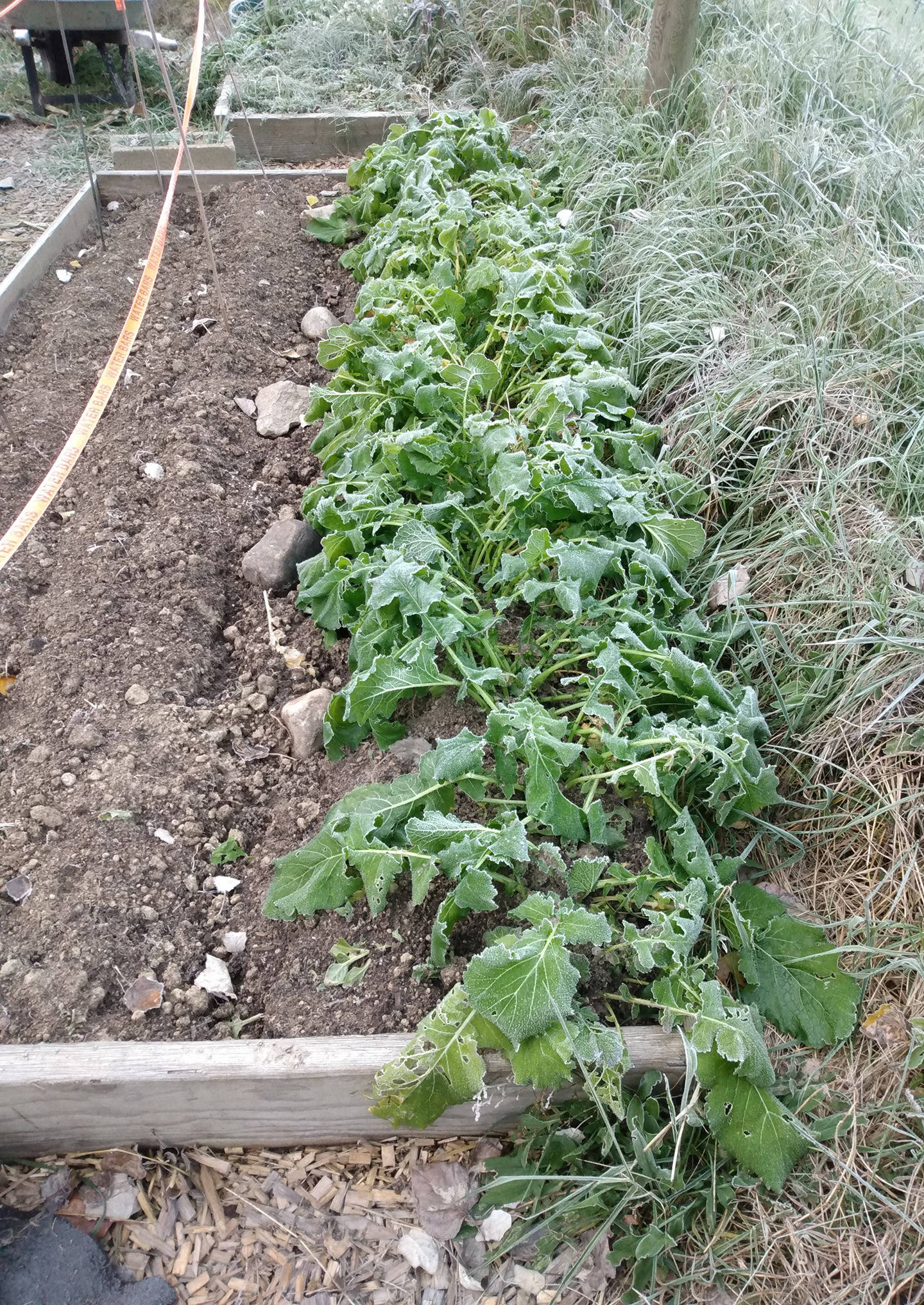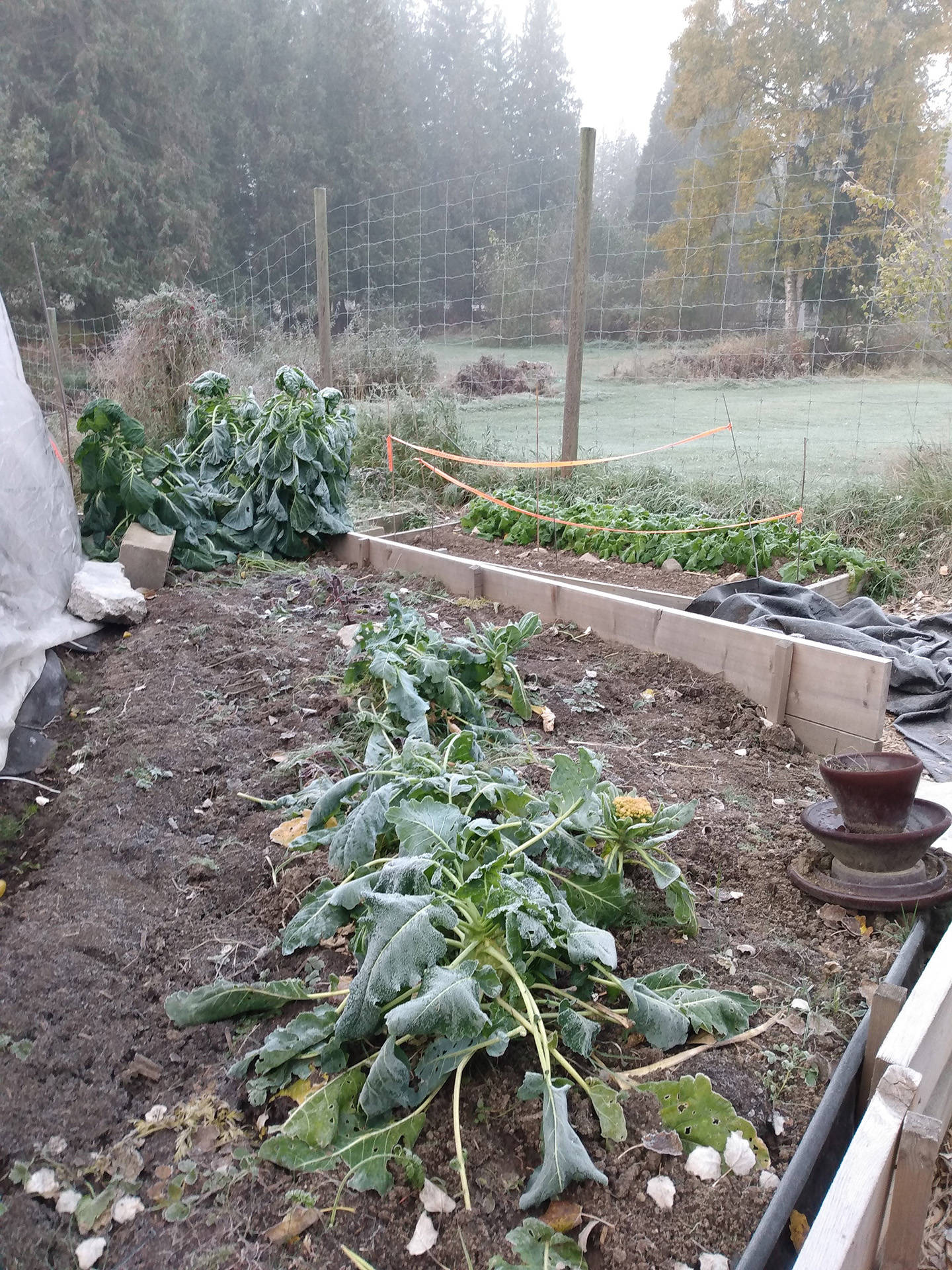The days are getting shorter, leaves are turning, and frost crusts windshields and lawns in the morning.
But John Abenante’s garden isn’t slowing down yet.
“I push the envelope, that’s just who I am,” says the Fruitvale market-farmer, and owner of Earthy Organics.
Abenante and other farmers don’t let a small thing like the end of the growing season stop them from enjoying fresh vegetables. He says there are plenty of crops you can grow to keep eating from your garden, right up to Christmas.
And sometimes even beyond.
“You can definitely extend your season in the fall,” he says. “I plant beets and carrots at the end of July and get a late harvest. I’m just harvesting my cabbage now; I did a late planting in early August of cauliflower, broccoli and kohl rabi. So I did three plantings of those brassica. I always have success with brassicas.”
Brassica are a family of vegetables that include broccoli, cauliflower, cabbage, kale, and turnip. Fast growing, with thick leaves, the plants thrive in cool weather, tolerate frost, and can continue to grow as the days grow shorter.
Abenante says a lot of different factors play into how far you can push your fall weather crops.
“My farm is in Fruitvale, which is a little more elevated,” he says. “And I get 100 per cent sun exposure during the day. So I can push it a little bit.”
Abenante’s organic farm depends on these late crops to supplement his business.
He also has two large greenhouses, one of which he heats with a pellet stove to push even more crops past their end-of-season date, like peppers and tomatoes.
“Even on cooler days it will head up to 30 degrees,” he says.
Year-round veggies
But you don’t need a heated greenhouse to extend your garden’s productivity.
Just north and east of Castlegar, Frank and Libby Ruljancich have been farming for 40 years near Deer Park on the Arrow Lakes.
“We’re still harvesting things like potatoes, carrots and beets,” says Frank. “But we’re also still producing broccoli, cauliflower, kale and swiss chard.
“We grow all our vegetables through the year. We don’t buy any vegetables. “
While you can cover up crops this time of year to help them survive frosts, it’s also a matter of just planting things that can survive in cool — or cold — weather.
“Brussel sprouts, parsnips, kale, and we still have cabbage out,” suggests Ruljancich. “The root crops you can mulch for a while, but once it gets cool crops won’t grow.”
The Ruljancichs produce enough food in summer they don’t work really hard to extend into the fall, but they do plan for some fresh vegetables to supplement their stored crops.
“We use cold frames, covering lettuce and spinach we planted about a month ago,” he says. “Usually it will stay until December- January. It will grow to full size in the fall, then just sits there. Yesterday I just planted some lettuce and spinach in a cold frame. It will come up about an inch or so, then sit there the rest of the winter. We just leave it, cover it with the cold frame and the next spring it will start to grow and we will have lettuce in April.”
In one insulated raised bed the Ruljancichs are experimenting. They’ve put double-paned glass over the box, and a heat tracer in the earth to keep the soil slightly warm — just above the hard winter freeze.
“It all grows until December sometime, when there’s just not enough light anymore,” he says. “We eat that all winter, then we replant it in January or February, and get another whole crop, so we basically have fresh greens all winter.”
The Ruljanciches run a course in how to get the most out of your garden year-round, starting each spring.
An eye on the weather
Back in Fruitvale, having heated greenhouses doesn’t mean that John Abenante’s won the battle with nature. By the end of October, nature is doing its best to kill his plants, and he has to watch the weather closely.
“You’re constantly on the weather sites, or your apps, checking what the weather is doing,” he says. “And it’s unpredictable. You can’t guarantee that this crop will come and you’ll make a profit off it.
“And I will cover them when the temperatures goes down. If it gets down to –10 you’re done, but –5 and up you can survive. Your crops can be okay at –5.”
But things can still go awry for even the best-equipped grower. Reading in the media that it was going to be a mild fall, he threw some extra plants into the ground in hopes of getting good return.
“So in my head I thought ‘wow this is great, I will have a great crop in October’ because it usually warms up in October,” he recalls.
“And I told people ‘wait, wait, October is going to be gorgeous. September will be nice’. But it’s just backfired. I put my foot in my mouth on that one.”


